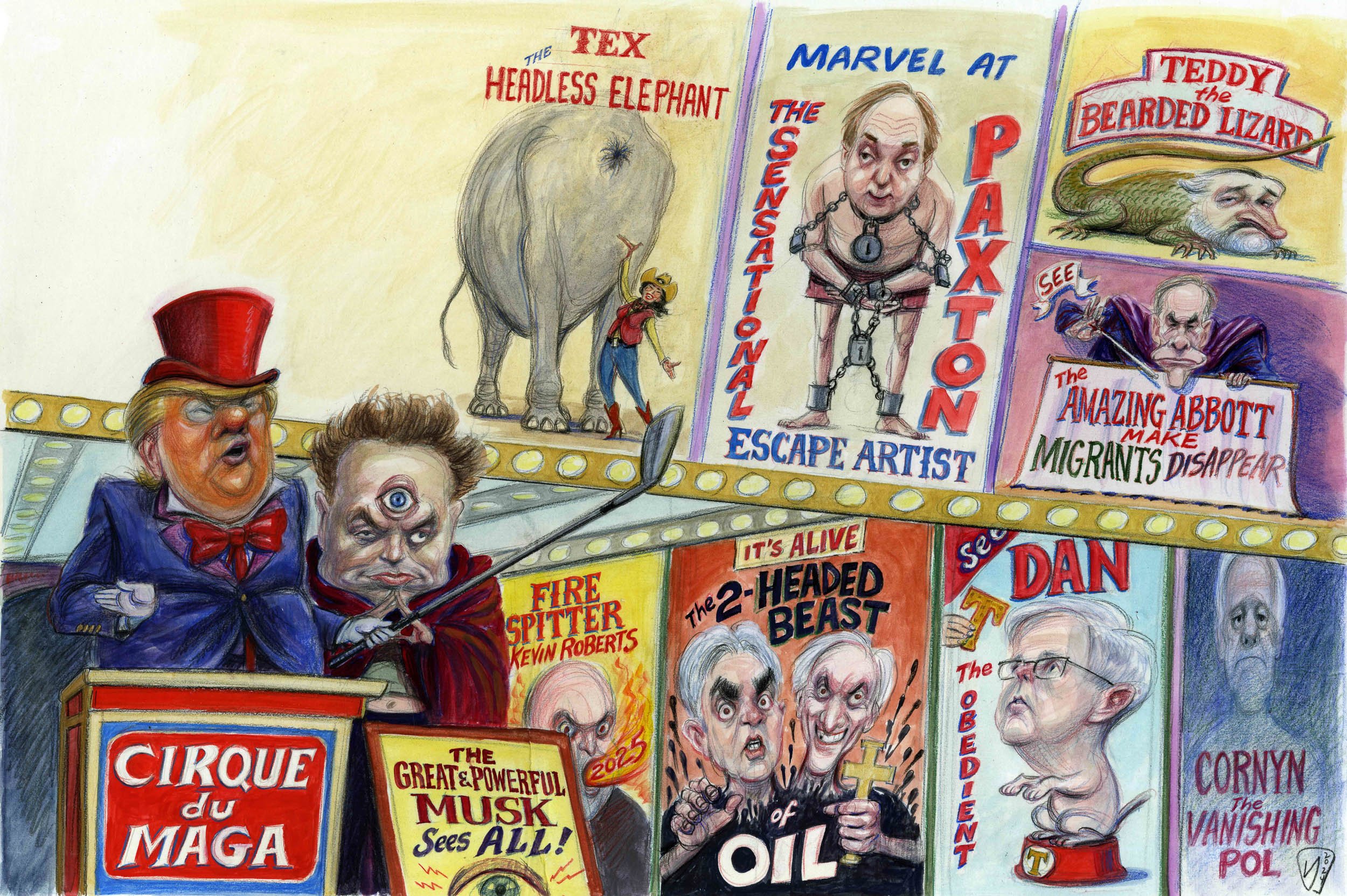Book Review
The Alchemists of Jazz
Giants of Jazz
According to Jelly Roll Morton, the great Louisiana-born jazz composer and pianist, it was in 1902 that he composed his seminal “King Porter Stomp,” a tune recorded by almost every big band of the Swing Era. Now, more than a hundred years later, any number of CD reissues of Morton’s own recordings are available, including a five-CD boxed set from JSP Records out of London. Not only can Morton’s own recorded jazz be found in CD bins, but jazz of every imaginable type is being issued or reissued almost daily, which evinces, for any needing such proof, the staying power of this American music. Further evidence of the lasting appeal of jazz is attested by the appearance in 2002 of countless articles, books, exhibits, and documentaries on the music and the lives of its artists. Two such books are Alfred Appel’s Jazz Modernism from Ellington and Armstrong to Matisse and Joyce and a reissue of Studs Terkel’s Giants of Jazz, which first appeared in 1957 and was revised in 1975. Although these two volumes are basically 45 years apart in their conceptions, and although much has been written and discovered about jazz since the original printing of Terkel’s book, both of these studies have much in common when it comes to their treatment of key figures in the history of jazz. Both texts are valuable guides for the serious jazz fan as well for those readers seeking a reliable introduction to the principal contributions the music has made to American and even world culture.

What may surprise some jazz aficionados is the fact that both Appel and Terkel focus attention on the music of Fats Waller, and in Appel’s case also on Waller’s satirical commentaries on the lyrics he sang. Some jazz purists have long denigrated Waller as having pandered to commercial taste and having demeaned himself and jazz through his mixing of an undeniable pianistic virtuosity with a clownish comedy routine. But Appel especially finds that this view misses the profound modernist achievement of Waller’s refashioning of Tin Pan(dering) Alley tunes into ironic, witty, knowing asides on the content of the pop songs he was basically assigned to record by studio executives. (My play on Tin Pan Alley is typical of what Appel does throughout his punning text, his own word play often based on Waller’s witty double entendres.) Appel also applies this same “reading” to Louis Armstrong’s recasting of popular songs. The critic reveals that both Waller and Armstrong were alchemical masters of the modernist technique, made famous by Picasso and Joyce and other artists and writers, of converting trash into treasure, base metals, as it were, into gold.
What again may be surprise jazz cognoscenti is that Appel includes in his revaluation of jazz as a modernist art the vocal and instrumental performances of Texan Jack Teagarden. In reconsidering Big T’s recordings in the 1940s as the first white member of the Louis Armstrong All-Stars (Teagarden had made a studio recording with Armstrong in 1929), Appel hears in the work of this “finest white blues singer” and revolutionary trombonist an ability through “the pressing earnestness of his light baritone voice [to turn] banalities–’don’t save your kisses / pass them around’–into a carpe diem philosophy, almost; . . . [to make] its unvarnished lyrics ring true.” In discussing Teagarden’s recording of “St. James Infirmary” from a 1947 concert with the Armstrong All-Stars, Appel notes that the singer-trombonist “completes the blues with his inimitable laconic soulfulness–Afro-Cowhand, it could be labeled to attract more educators to the idea of jazz multiculturalism.” As for Teagarden’s trombone solo following his vocal, Appel observes that it “is aleatory music, modernism by definition, though to him it was a proven crowd-pleasing vaudeville trick: using a water glass in place of the trombone’s chamber and flared bell, which produced an ethereal, plaintive sound–and here, in the Infirmary, some rasping, ascending and descending buzzes, the anguished inner voice of a mourner.” Appel then contrasts Teagarden’s more straightforward interpolation of “I’ll let the congregation join in” during his 1956 singing of “Aunt Hagar’s Children’s Blues” with the practice of Armstrong and Waller, who “would have played it for laughs.” But otherwise the Texan from Vernon serves to illustrate Appel’s primary thesis in his book, since he asserts that “Teagarden the singer epitomizes multicultural jazz music and the modernist impulse to turn dross to brass.”
Jazz Modernism makes its point repeatedly through Appel’s comparisons of modernist artworks, such as Picasso’s 1912 Guitar, Sheet Music, and Glass, Matisse’s Jazz of 1947 (which includes a cutout entitled The Cowboy), and Texan Robert Rauschenberg’s Monk, with the compositions of Duke Ellington, the jazz singing of Billie Holiday as accompanied by tenorist Lester Young, and even the duo of Texas reedman Budd Johnson and Armstrong doing a bit of “charming nonsense” on “Sweet Sue, Just You” from 1933, with Budd scatting in pig latin! Although Rauschenberg’s Monk from 1955 is a fit for Appel’s thesis, since this collage piece incorporates a record label from a longplay recording of Thelonious Monk’s famous “Round about Midnight,” Appel rejects the Texan’s work as “jazz modernism because it doesn’t swing or sing–that is, its collage doesn’t make verbal sense, one of the considerable achievements of the celebrated 1912-1913 collages of Picasso, Braque, Sonia Delaunay, and the infinitely legible Carlo Carrà. . . . Rauschenberg’s tangled if not agonized abstract expressionist impasto pigments at the top of Monk are truly off-key. . . .”
On the other hand, Appel finds the work of Piet Mondrian, particularly his Broadway Boogie Woogie of 1942-43 and Victory Boogie Woogie of 1942-44, illustrative of his jazz modernism theme, in part because these works were created while the painter was listening in New York to recordings of boogie-woogie piano. Among the boogie recordings that Appel relates to Mondrian’s artwork are pianist Pete Johnson’s 1938 “Roll ’em Pete,” with Texas trumpeter Oran “Hot Lips” Page, and Johnson’s 1940 “Boo-Woo,” with Texas trumpeter Harry James. The critic remarks that these two recordings were in the artist’s own collection and that in Broadway Boogie-Woogie
Mondrian’s basic geometry is boogie-woogie for the nonce, the left hand’s “vertical” bass line ostinato (propulsive repeated figures) playing against the right hand’s “horizontal” dotted eighth or sixteenth notes, heavy chords, simple riffs, tremolos, and choruses of percussive single notes, spaced variously, positing a stop-and-go-traffic neon-light time overview of broadway and times square. Synesthesia rules, and the painting swings.
In addition to commentaries on modernist paintings, Appel also incorporates modernist literary works into his analyses of jazz, with James Joyce’s Ulysses figuring prominently in Appel’s attempt to link jazz and modernism. Appel partly criticizes the novel’s “obscurantism” by contrast with jazz when he writes that “the brass of Ellington and Teagarden is of course accessible and even Ulysses is not beyond rescue. . . .” He later continues in this vein when he declares “‘Rhythm saved the world,’ sings Armstrong, and Joyce is readily comprehensible when he’s got rhythm, as he does in the sociopolitical parodies of ‘Cyclops,’ comic invention and patter of ‘Circe,’ and rolling lyricism of ‘Penelope,’ the Molly Bloom chapter.” Also of significance for Appel in connecting jazz and modernism is Eudora Welty’s short story, “Powerhouse,” which was in fact based on a performance by Fats Waller that the Southern writer attended about 1939 in her hometown of Jackson, Mississippi. Appel rightly proclaims that this is “probably the best story about jazz,” and he accounts for its “great power and originality” on the basis of Welty’s “conflation of church and state–the state of a jazz musician who formulates the author’s extraordinary sense of the tone and pace of a sanctified church meeting and the closed-off Negro world of ‘juju,’ of fear and deathly superstition.” The critic then brings Welty’s art to bear analogically on Waller and Armstrong who, “if music-making is an act of faith, . . . are bishops in the church of lost songs, where it is truly Christian to save a dog tune.”
The prose of Studs Terkel is not as jazzy as Appel’s, and neither does Terkel employ a comparative approach that ranges from Waller’s takeoffs on “My Window Faces the South” and Ellington’s “music as a healing, multicultural balm” to painting, baseball (“Harry James, who recorded ‘Dodgers Fan Dance’ [1941], was said to care as much about a band recruit’s baseball skills as his musicianship”), Walker Evans photographs, Brancusi sculpture, and Calder wire “sketches” of Josephine Baker. Yet Terkel’s writing style does serve to inspire the reader to listen to the music, which obviously is the primary aim of both these books. Terkel’s prose is lucid rather than witty and punning, and through its clarity it is in fact so inspirational in recounting the lives of lowly musicians who rose on the wings of jazz to become King, Count, Duke, and legendary Bix and Bird that his book can serve as an ideal introduction for the young reader and a refresher course for the jaded know-it-all. Terkel was and is a populist, and his Giants of Jazz is a popularizing narrative of the lives of thirteen musicians and their music. He begins with one of my own personal favorites, Joe “King” Oliver, and ends with John Coltrane. In each case Terkel emphasizes the difficulties the musicians faced in their careers, including poverty, prejudice, competition with other musicians, parental objections to the playing of such music, and drinking or drug addiction. For example, Fats Waller’s father “strenuously” opposed his son’s dropping out of school to perform professionally and could not understand how such a bright boy could not comprehend “simple algebra.” Terkel reports that Fats always had a clever response to any question: “maybe it’s because my head’s all filled with music. An’ it ain’t got any room left for all those x’s an’ y’s an’ q’s.” As both Terkel and Appel assert, music and humor always went hand in hand with Waller, and the former’s description of Fats’ “tongue-in-cheek versions of pop songs” is right on: what made his performances “click was his ‘happy frog’ kidding of the drippy lyrics.”
Whereas Appel’s book offers the special feature of 127 full-color reproductions of paintings, photographs, record labels, and sculptures, the Terkel book yet provides readers with tasteful, revealing line-drawings by Robert Galster. The artist has faithfully captured the recognizable appearance and even something of the inner spirit of Terkel’s thirteen jazz musicians: Oliver, Armstrong, Bessie Smith, Beiderbecke, Waller, Ellington, Goodman, Basie, Woody Herman, Gillespie, Parker, and Coltrane. The Galster drawings were included in the 1957 edition of Giants of Jazz but not the 1975 revision of Terkel’s book. It is good to have such sketches restored in the latest edition.
Necessarily, the first printing of Giants of Jazz did not include a chapter on John Coltrane and did not mention other figures who would only come to prominence after 1957. Aside from not containing the Galster sketches, the 1975 revised version of Giants of Jazz and the new edition differ only in that the latter drops a sample list of New Music, which included recordings by Thelonious Monk, Miles Davis, Eric Dolphy, Cecil Taylor, and Fort Worth native Ornette Coleman. In Terkel’s chapter on Coltrane, he does note that ‘Trane “was listening to younger musicians like Ornette Coleman and Cecil Taylor, people who were using many of the styles that fascinated him.” In his Jazz Modernism, Alfred Appel does not mention Coleman at all, perhaps because Appel felt that, as he observes of Coltrane and Dolphy, Ornette, with his so-called “free jazz,” has “eschewed the salient characteristics of 1920-1950 classic jazz: accessibility; humor; a capacity for joy; the Great [white] American Songbook, the backbone of jazz multiculturalism . . ., and the goals and ideals of racial integration.” However, Coleman definitely does exhibit a sense of humor and a “capacity for joy,” if not the other characteristics Appel lists, so that at least in this regard the Texan too is a jazz modernist.
For his part, Studs Terkel believes, as the title of his final chapter has it, that “jazz is the music of many” and that “its language is universal . . . It speaks in the tongue of joy and freedom.” Both Terkel and Appel make this point vividly and for this reason alone both of their books are valuable reflections on an American music that continues to inspire artists in every field–among others, television series, film, dance, drama, poetry, detective novels–just as it goes on moving listeners around the world and in every walk of life.
Dave Oliphant is a poet and writer in Austin.


